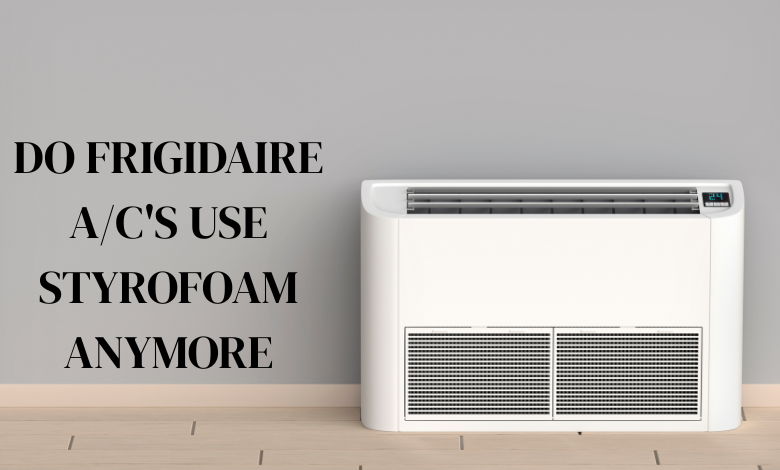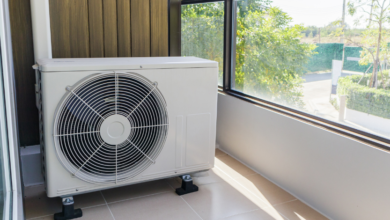Do frigidaire a/c’s use styrofoam anymore

Styrofoam, or expanded polystyrene (EPS) foam, has long been a staple in the appliance industry for its lightweight, insulating properties and low cost. In air conditioners (A/Cs), it serves dual purposes: as protective packaging during shipping to prevent damage to delicate components and as an integral internal component for directing airflow and providing thermal insulation. However, with growing environmental concerns—Styrofoam is non-biodegradable, contributes to landfill waste, and can harbor mold due to moisture retention—consumers are increasingly asking: Has Frigidaire, a leading brand under the Electrolux Group, phased out Styrofoam in their A/C units? This article explores the current practices based on recent user reports, manufacturer statements, and industry trends as of October 2025.
The Role of Styrofoam in Frigidaire Air Conditioners
Frigidaire window and portable A/Cs have historically incorporated Styrofoam in two key areas:
- Internal Structural Use: Inside the unit, EPS foam forms air ducts, fan shrouds, and insulation barriers. This white, molded foam separates the evaporator coil (cooling side) from the condenser (hot side), directing cool air into the room while preventing hot outdoor air from infiltrating. Manufacturer FAQs and customer support responses emphasize that this foam is not packing material and should never be removed, as doing so can reduce efficiency, cause improper airflow, or void warranties.
- External Packaging: During shipping, additional Styrofoam blocks or inserts protect the compressor, coils, and housing from impacts. These are explicitly listed in user manuals as “internal packaging” to be discarded after unboxing.
User experiences confirm this persists. For instance, in a 2018 Best Buy Q&A for a Frigidaire 350 sq. ft. window A/C, support clarified: “The Styrofoam inside the air conditioner is there as a function of the air conditioner and not recommended to be removed.” Similar reports from Amazon reviews in 2013 and ongoing Reddit threads up to 2023 describe the same setup, with users mistaking the permanent foam for shipping debris. As recently as 2025, HVAC blogs note that Styrofoam blocks in older or “economy” models can still appear as outdated packing, but Frigidaire’s design retains it for functionality.
Read Also: G&C Auto Body: Your Full Guide to Services, Locations, Reviews & How to Pick the Right Shop
Environmental Concerns and Industry Shifts
Styrofoam’s drawbacks are well-documented. It breaks into microplastics that persist for centuries, leaching toxins into soil and water, and its textured surface traps moisture, fostering mold growth in humid A/C environments. A 2025 JustAnswer expert guide on Frigidaire A/C mold highlights how foam acts as both a moisture barrier and a mold risk, recommending cleaning over removal. Broader industry analyses, like those from GE Appliances, acknowledge EPS as standard for insulation but note sunlight visibility through it as a normal trait of low-density foam.
The push for sustainability is real. Electrolux Group, Frigidaire’s parent, has committed to reducing virgin plastics by 50% in packaging by 2030, per their 2024 sustainability report (though specific A/C details are sparse). Competitors like LG and TCL are transitioning: LG’s newer models use smooth plastic ducts to minimize mold, and TCL confirms EPS but promotes recyclable alternatives. General eco-alternatives include corrugated cardboard, plant-based PLA-lined paper, and air pillows, which absorb shocks without environmental harm. However, for internal components, EPS remains cost-effective and efficient, slowing full adoption.
Despite these trends, no public announcements from Frigidaire indicate a Styrofoam ban. Searches for “Frigidaire AC eco-friendly packaging changes” yield mostly user forums reiterating its permanence, not phase-outs. As of 2025, Frigidaire models like the FFRE0833S1 are recommended as “Styrofoam-free” in some reviews, but this likely refers to packaging only—internal foam persists.
Current Status: Yes, But With Nuances
In short, Frigidaire A/Cs do still use Styrofoam as of October 2025. The internal EPS foam is a deliberate design choice for insulation and airflow, confirmed across models like the FRA125CT1 (2010) to recent economy units. Packaging Styrofoam is removable but common in transit. While external packaging may incorporate more recycled materials amid sustainability goals, the core internal use shows no widespread elimination. If mold is a concern, opt for regular cleaning or models with antimicrobial coatings.
FAQs
1. Is the Styrofoam inside my new Frigidaire A/C supposed to stay there?
Yes, the white EPS foam visible through vents is a permanent air duct and insulator. Removing it can impair cooling efficiency and airflow. Only discard shipping blocks as per the manual.
2. Can Styrofoam in Frigidaire A/Cs cause mold, and how do I prevent it?
Styrofoam can trap condensation, leading to mold in humid conditions. Clean it with a mild bleach solution (1:10 ratio with water), dry thoroughly, and run the unit on fan mode periodically for ventilation. Replace filters monthly.
3. Has Frigidaire switched to eco-friendly alternatives for Styrofoam?
Not fully. While Electrolux aims to cut plastic use, internal EPS remains standard for functionality. Packaging may use more cardboard, but check product specs for updates. Alternatives like LG’s plastic ducts are available from competitors.
4. What should I do if I find extra Styrofoam after unboxing?
Inspect vents and coils for loose pieces—these are packaging and must be removed to avoid blockages. If airflow seems restricted, consult Frigidaire support or an HVAC pro.
5. Are there Styrofoam-free Frigidaire A/C models in 2025?
No confirmed fully Styrofoam-free models from Frigidaire, but some reviews praise the FFRE0833S1 for minimal foam. For zero-EPS options, consider TCL or GE units with plastic alternatives.
Conclusion
Frigidaire air conditioners continue to rely on Styrofoam for essential insulation and protection, balancing performance and cost over full eco-overhauls. While industry momentum toward sustainable materials like recycled paper and biodegradable foams is building, the brand’s designs prioritize reliability, making Styrofoam a fixture for now. Environmentally conscious buyers may prefer competitors innovating faster, but for most, proper maintenance mitigates risks like mold. As regulations tighten on single-use plastics, expect more changes—check Frigidaire’s site for the latest. Stay cool, and choose wisely for a greener tomorrow.



